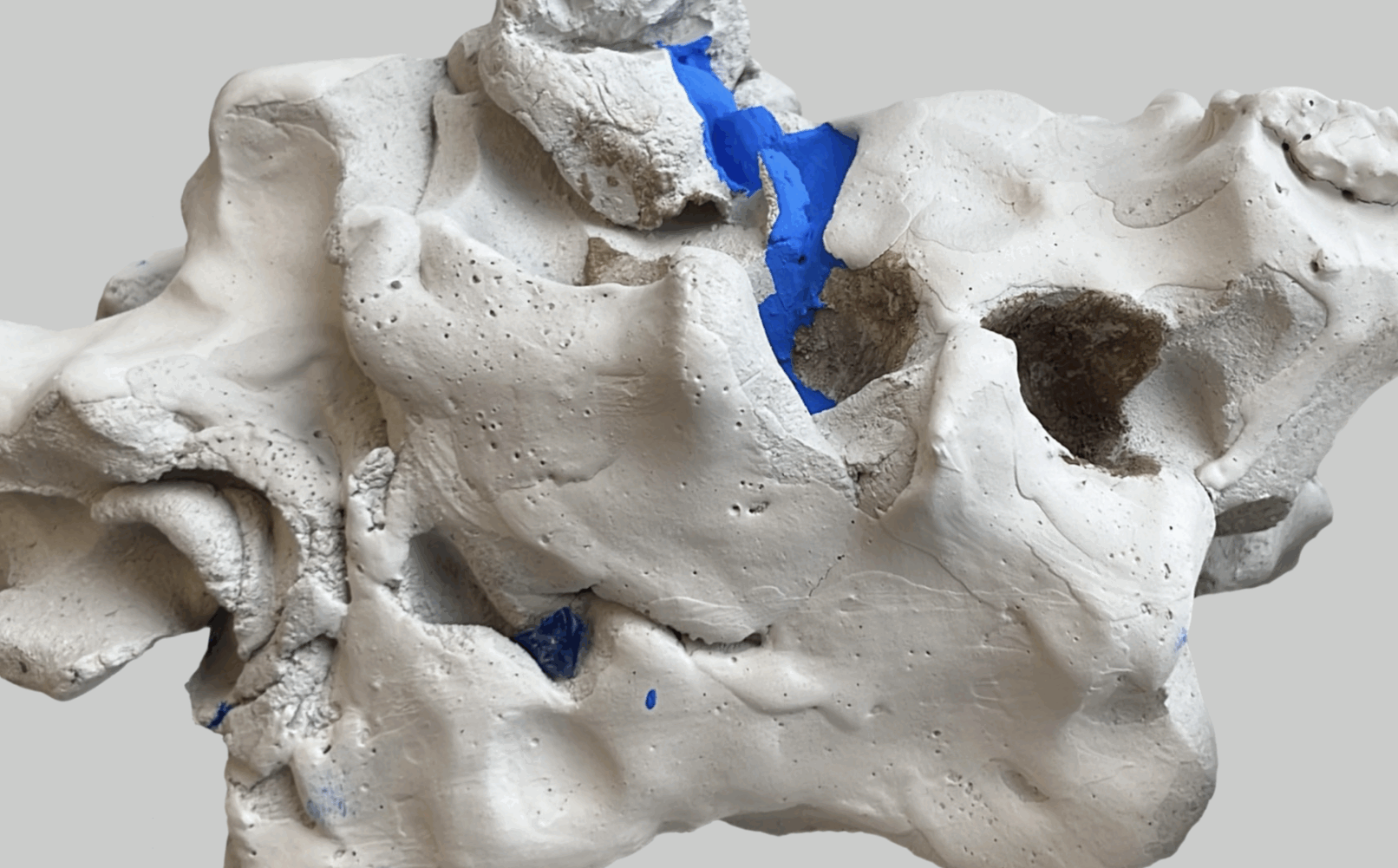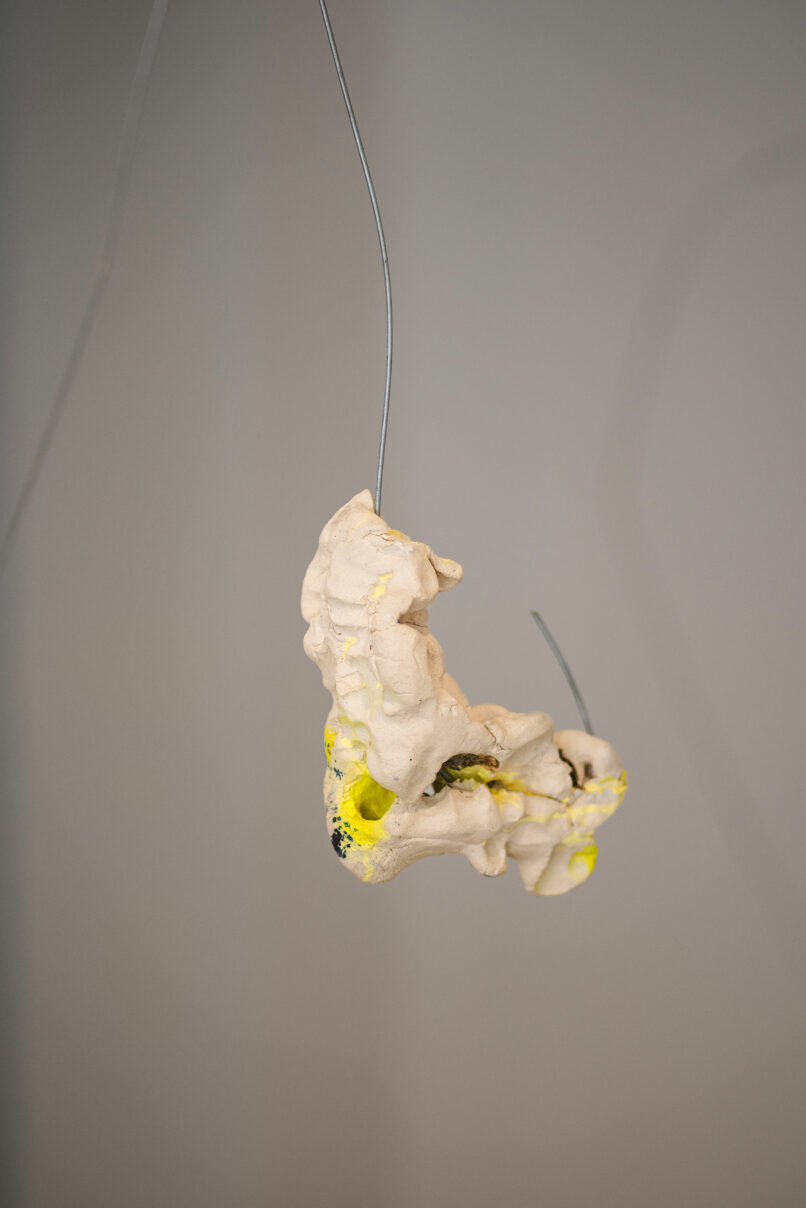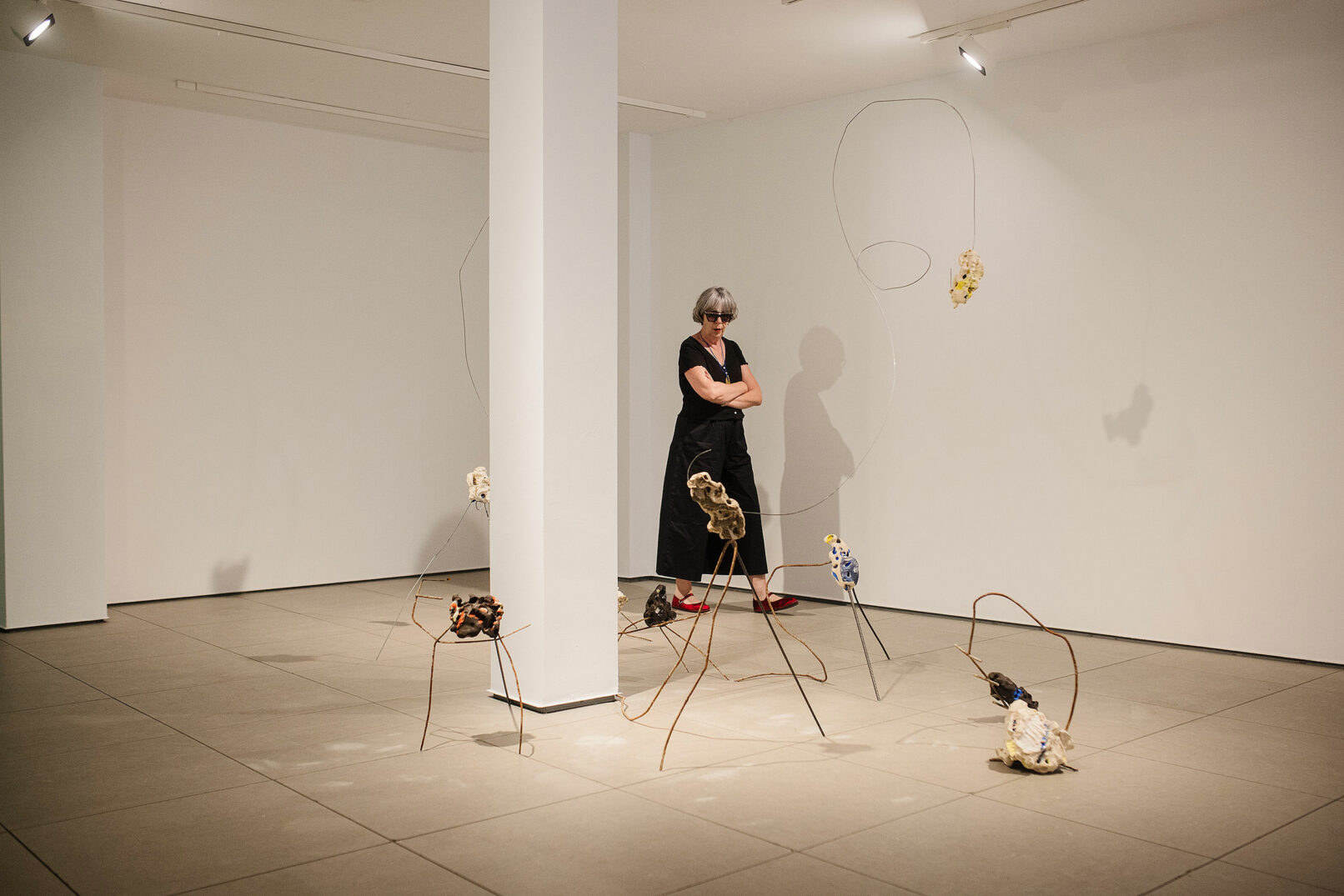Anar per terra
“Somos una especie que habita cuevas. No estamos hechos para dormir a la intemperie; perdimos el pelo y la piel se nos ha vuelto cada vez más fina. Los habitáculos nos protegen, nos calientan y guardan nuestros vestigios. Acumulan todo tipo de historias: escombros, sillas, materia orgánica, sábanas que nos marcan la piel, mordiscos, cucharas, cepillos que han dedicado su existencia a limpiarnos los dientes.
Algunos de estos fragmentos se mudan con nosotros a lo largo de la vida formando una segunda piel. Otros nos cuelgan como trofeos o apéndices inútiles. Nuestro cuerpo se funde con las ruinas en piezas de un rompecabezas que no encajan del todo, forzadas a convivir. Nos transformamos en cada umbral que cruzamos, moldeandonos a los contornos de nuevas cavernas que nos acogen. Susurramos gratitud a estos refugios, a estas geografías íntimas que nos cobijan. El derecho a un hogar digno, a un simple resguardo: derecho fundamental, necesidad primera, eco homínido buscando la cueva donde reposar nuestros huesos.”
Aquesta descripció inicial constitueix la premissa conceptual d’Anar per Terra, projecte en què es presenten una sèrie d’instal·lacions ceràmiques que exploren les nostres formes contemporànies d’habitar els marges. A través de la terra com a material germinal, aquestes peces interroguen tres dimensions fonamentals: el dret de l’ésser humà al refugi i la necessitat ancestral d’habitar un lloc protegit; l’experiència de viure en l’esquerda, en els «no llocs» —físics, culturals i simbòlics— on la identitat es forja en la tensió de no pertànyer completament, revelant la fissura com a territori de potencialitat creativa; i finalment, la creació d’objectes artístics després de trobades col·lectives comunitàries.
Aquest projecte sorgeix d’una investigació participativa desenvolupada a través de trobades amb grups que habiten aquestes esquerdes contemporànies. Des de les subjectivitats compartides en el procés, l’artista ha extret inspiració d’aquestes trobades per generar objectes que intenten condensar el tractat dins dels col·lectius. Les instal·lacions funcionen com a traduccions poètiques d’experiències viscudes, materialitzant-se en peces que dialoguen entre la fragilitat i la resistència, convertint la terra en dipositària de memòries, absències i possibilitats de transformació.
El projecte va ser concebut com a procés integral: investigació i resultat. La investigació va començar amb trobades entre La Volta, el Bòlit i l’artista per teixir una col·laboració que s’arrelés a la ciutat. Dins d’aquest exercici va sorgir la col·laboració amb el Col·lectiu La Incòmoda, agrupació del barri Sant Narcís que porta anys treballant en comunitat i que actualment debat la crisi habitacional que travessa la ciutat.
A partir d’aquesta premissa es van plantejar tres tallers: La caverna, El buit i La planta d’una casa de la memòria. A través d’aquestes trobades es va parlar amb les mans i mitjançant el fang. Es van compartir històries, es van observar les peces ser admirades, col·lapsar i renàixer. El fang com a vehicle —i no com a resultat— era la premissa d’aquestes trobades.
Anar per Terra compta amb la col·laboració de l’artista Manel Quintana en el desenvolupament expositiu i de la ceramista Provi Casals, que ha assessorat el procés tècnic de les peces ceràmiques.
Aquest projecte ha estat desenvolupat en col·laboració amb el projecte de La Incòmoda, del qual formen part el Centre Cívic Sant Narcís, La Volta, l’Associació Veïns Sant Narcís, SBAS Sant Narcís, la residència MIFAS, i artistes i participants dels tallers.
…
«We are a cave-dwelling species. We are not made to sleep in the open; we lost our hair and our skin has become thinner. Dwellings protect us, warm us, and store our traces. They accumulate all kinds of stories: rubble, chairs, organic matter, sheets that mark our skin, bite marks, spoons, brushes that have dedicated their lives to cleaning our teeth.
Some of these fragments move with us throughout life, forming a second skin. Others hang from us like trophies or useless organs. Our body merges with ruins like puzzle pieces that don’t quite fit, forced to coexist. We transform at every threshold we cross, molding ourselves to the contours of new caverns that shelter us. We whisper gratitude to these refuges, to these intimate geographies that protect us. The right to a decent home, to simple shelter is a fundamental right, a primary need, an echo of our hominid self seeking the cave where our bones can rest.»
This initial description constitutes the conceptual premise of «Anar per Terra», a project presenting a series of ceramic installations that explore our contemporary ways of inhabiting the margins. Through earth as germinal material, these pieces interrogate three fundamental dimensions: the human right to shelter; the experience of living in the cracks, in the «non-places»—physical, cultural, and symbolic—where identity is forged in the tension of not completely belonging, revealing the borderland as territory of creative potential; and finally, the creation of artistic objects following collective community sessions.
This project emerges from participatory research developed through encounters with groups that inhabit these contemporary cracks. From the subjectivities shared in the process, the artist has drawn inspiration from these exchanges to generate objects that attempt to condense what was addressed within the group. The installations are poetic translations of lived experiences, materializing the dialogue between fragility and resistance, turning earth into a repository of memories, absences, and possibilities for transformation.
The project was conceived as an integral process: research and result. The research began with encounters between La Volta, Bólit, and the artist to weave a collaboration rooted in the city. Within this exercise emerged the exchanges with Colectivo La Incòmoda, a group from the Sant Narcís neighborhood that has been working in the community for years and currently debates the housing crisis affecting the city.
From this premise, three workshops were proposed: The Cave, The Void, and The Floor Plan of a House of Memory. Through these encounters, people spoke with their hands and through clay. Stories were shared, pieces were observed being admired, collapsing, and being reborn. Clay as a vehicle—not as result—was the premise of these encounters.
«Anar per Terra» features collaboration from artist Manel Quintana in exhibition development and ceramist Provi Casals, who has advised the technical process of the ceramic pieces.
This project has been developed in collaboration with the La Incòmoda project, which includes Centre Cívic Sant Narcís, La Volta, Associació Veïns Sant Narcís, SBAS Sant Narcís, MIFAS residence, and artists and workshop participants.
Participantes:
Anna Castilla
Laura Ciurana
Moufida El Hayani
Edgar Fernández Garrido
Teresa Jiménez Torres
Irene Jiménez Muñoz
Cristina Labián Roca
Teia Lagos Jiménez
Ángel Luján Batlle († 2025)
Núria Massegú Roger
Elisa Murillo Ibargüen
Laura Pinos Noguera
Quim Plana Planella
Nuri Rabot
Sohaila Riffi Metals
Sanata Daou Traoré (soporte)
Nauel Contarino Medina (coordinación)





